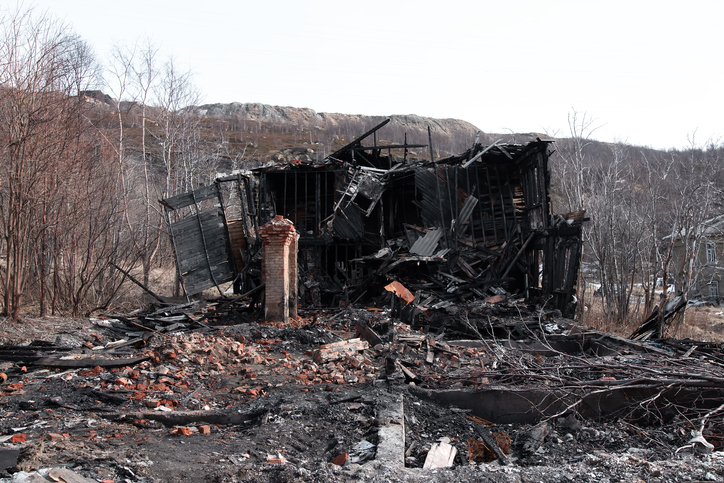In a past post, we offered some lessons for homeowners who suffer “burnt out of sight” (BOS) property losses. This helpful information sparked a great response from our readers, many of whom had more specific questions about “what to do” when facing a BOS situation. In this post, we will answer the main questions posed by our readers as it relates to this type of loss.
- Ask the right questions
The first thing to do is consult with your team of advisors. This team includes your insurance agent and, ideally, your public adjuster (PA). They should immediately evaluate the coverage limits of your policy and explore the possibility that the cost of repairs may approach or exceed the policy’s limit of liability. It’s imperative to review the policy in detail to find these additional coverages. Your insurance policy likely contains the key information for this preliminary meeting, including:
- Is there enough coverage on the structure?
- Is there adequate code coverage and what might the code claim consist of?
- Is there additional coverage for debris removal should the building limit be exhausted?
- Is there other structures coverage and what is considered an “other structure”?
- Were trees, shrubs/plants and landscaping damaged and, if so, is there additional coverage for these items?
- Does your policy have any endorsements that provide extended limits of coverage or inflation guard?
- Visit the site
A site visit enables you (and your PA) to view the debris in an effort to identify building systems and finishes and – equally as important – examine and measure the foundation. Why pay so much attention to the foundation? Oftentimes, assumptions are made that the foundation is not directly damaged as a result of the fire. However, there are other factors that could affect the need to replace the foundation. You’ll want to evaluate the type of foundation – is it a block, fieldstone or poured concrete? What’s the likelihood that the pending demo will compromise the foundation. And, assuming it will be compromised, how will this additional debris removal affect the surrounding landscaping, hardscapes, retaining walls and other structures? This level of evaluation is imperative when forecasting and compiling a complete and accurate building estimate. A structural engineer is often involved in this process, which can be a point of negotiation with the insurance carrier.
Another area to watch for is the enforcement of local and state code requirements. A thorough inspection will determine any code shortcomings of the existing structure.
- Create a detailed depiction of the house
Your PA will need to understand the layout of the house – this includes the number of bathrooms and bedrooms, and whether any recent repairs have been done. If you have any photos of the property prior to the loss, use them. The goal is to recreate the house to reflect all finishes, quality of appliances etc. that the house had prior to the loss. This enables a more fulsome profile in Xactimate, the software that most insurance companies and PAs use to create building estimates. You can also use Zillow if the property was sold in the past 4-5 years (the photos will still be accessible), and even take a trip to Town Hall to see if the original building plans remain on file. Do you have any invoicing/contracts for repairs or improvements through decorators or general contractors? If so, use those as well – every detail improves the estimate!
Why a PA is helpful
As is clear from the list above, these details will make or break your insurance claim. A good PA will consider and evaluate all these details and incorporate them into the building estimate. The PA will anticipate the unanticipated, and provide back-up for that which the insurance company may not be considering as a viable scope. PAs are trained to anticipate the questions the insurance company will ask, and will often get answers to key questions before they are asked.
Challenges to BOS claims
The insurance company doesn’t show up to a house that’s completely burnt to the ground and write a check for policy limits right on the spot. Most often, it takes take knowledge, experience and negotiation skills to achieve this result. Also, the homeowner’s, PA’s and/or contractor’s expectations for the value of the house can be quite different from what the insurance company estimates. This is yet another area a seasoned PA can navigate to achieve a successful resolution.
We hope this overview of BOS claims was helpful. In a future post, we will examine what constitutes adequate coverage for your property, including code coverage and sufficient levels for debris removal and repair/replace costs at a different location.




